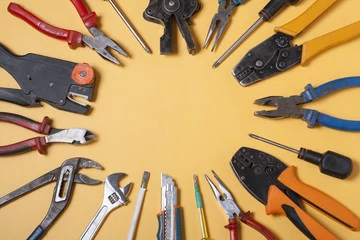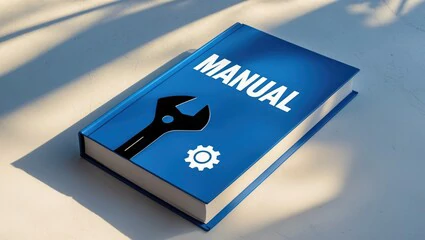Motorcycle Lithium Battery CCA: A Complete Guide for Cold Weather Starts
main content
When upgrading to a lithium battery for your motorcycle, understanding Cold Cranking Amps (CCA) is critical to avoid cold-start failures and ensure year-round reliability. Unlike traditional lead-acid batteries, lithium alternatives require careful evaluation of CCA compatibility to deliver the power needed for instant ignition in freezing temperatures. This guide explains why CCA matters, how to choose the right rating, and practical tips for seamless cold-weather performance.
1. Why CCA Matters for Lithium Motorcycle Batteries
First and foremost, CCA measures a battery’s ability to deliver a burst of power at 0°F (-18°C) for 30 seconds while maintaining stable voltage. For lithium batteries, which inherently lose efficiency in extreme cold, selecting a sufficient CCA rating ensures your engine turns over smoothly even in sub-zero conditions. A mismatch can lead to sluggish starts, repeated failures, or premature battery drain.
Lithium batteries, however, excel in other areas: they charge faster, last longer, and are 55% lighter than lead-acid options. To compensate for their slightly lower CCA efficiency compared to AGM batteries, prioritize models with built-in Battery Management Systems (BMS) to optimize power delivery in cold climates.
2. How to Determine the Right CCA for Your Bike
Motorcycle CCA requirements typically range between 150–300 amps, depending on engine size, climate, and usage. Follow these steps to find the optimal rating:
Check Your Manual: Manufacturers specify minimum CCA ratings for each model. For example, high-compression engines in touring bikes often require 250+ CCA.
Factor in Climate: Riders in northern regions (e.g., Canada or Scandinavia) should opt for 20–30% higher CCA than the minimum to counter thickened engine oil and extreme cold.
Balance Capacity and Size: While higher CCA improves cold starts, ensure the battery’s physical dimensions fit your compartment. Lithium batteries like the Yuasa YTZ14-S offer compact designs with 230 CCA, ideal for tight spaces.
3. Lithium vs. Lead-Acid: CCA Trade-offs and Advantages
Lithium batteries prioritize energy density and longevity over raw cranking power. While lead-acid batteries often deliver higher CCA, they degrade faster in cold weather and require frequent maintenance. Lithium alternatives, such as LiFePO4 models, maintain consistent voltage during discharge and recover quickly after cold starts.
Key considerations:
BMS Protection: Lithium batteries with advanced BMS adjust power output to prevent over-drain in freezing conditions.
Weight Savings: A 12V lithium battery weighs 55% less than lead-acid equivalents, improving bike handling without sacrificing reliability.
Long-Term Value: Though pricier upfront, lithium batteries last 4X longer, reducing replacement costs over time.
4. Common Mistakes to Avoid
Ignoring OEM Guidelines: Installing a lithium battery with insufficient CCA can strain your starter motor or damage the electrical system.
Overlooking Terminal Types: Ensure terminals match your bike’s configuration (e.g., top-post vs. side-terminal) to avoid rewiring.
Storing Without Charge: Lithium batteries should be stored at 50% charge in cool, dry environments to preserve CCA efficiency.
Conclusion
Choosing a lithium motorcycle battery with adequate CCA guarantees effortless cold starts, extended lifespan, and superior performance. Always cross-reference manufacturer specs, prioritize climate needs, and invest in BMS-equipped models for optimized power delivery. By balancing CCA requirements with lithium’s lightweight advantages, you’ll enjoy year-round reliability—whether navigating icy roads or storing your bike for winter.

START-STOP LITHIUM battery
Enov start-stop battery is designed to provide excellent performance for high-demand start-stop vaehicles. It adopts the third-generation intelligent lithium platform architecture to achieve technological breakthroughs in core indicators such as cycle life, environmental adaptability and energy density. Compared with the traditional lead-acid battery system, the energy efficiency is increased by 210%, the cycle life is extended by 8-10 times, and the monthly self-discharge rate is controlled within 3%. Enov's unique low-temperature battery technology makes a breakthrough in achieving stable output in the whole climate domain from -30℃ to 65℃, maintaining more than 90% of the effective capacity release under extremely cold conditions (-30℃), and maintaining 90% of the capacity in high temperature environments (65℃).
The start-stop battery series products cover the mainstream voltage platform of 12V/24V/48V, and support flexible configuration of LFP (lithium iron phosphate) and NCM (lithium nickel cobalt manganese oxide) dual-material system. All models adopt modular design to support customization of different model specifications. Enuo engineering and technical team to provide full cycle technical service support, if you need, please contact us.
Other products
UAV BATTERY
LITHIUM ENERGY STORAGE BATTERY
QUICK INQUIRY
FAQ
Access to high frequency technical questions with one click, get accurate answers on product application, after-sales policy and customization process.
Service and Support
Get the latest product specifications, explore professional OEM/ODM customization services, click to open exclusive technical support and production solutions.
Become a Partner
We sincerely invite resources to interconnect, work together for win-win development, and immediately open a new chapter of strategic cooperation!




